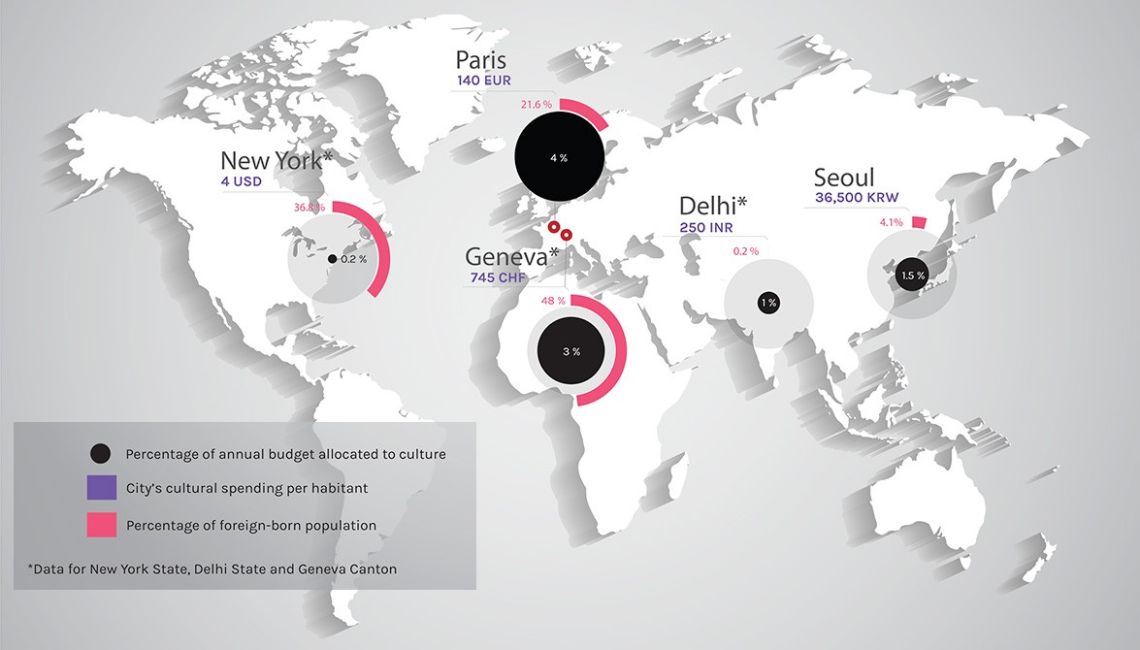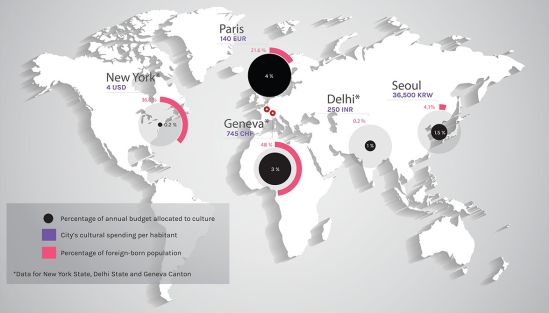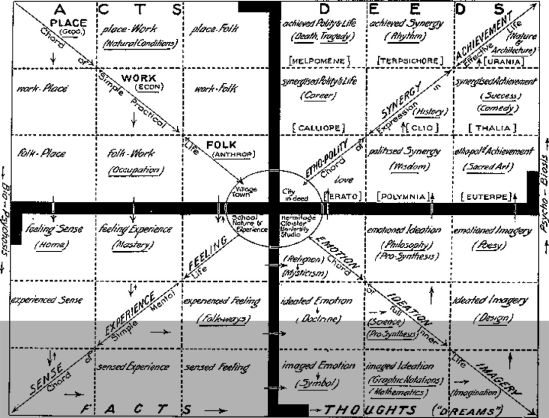Culture for a World in Flux

Culture for a World in Flux
Geneva, home to the European headquarters of the United Nations, the World Trade Organization, the Red Cross and countless other international organisations, prides itself with a population that is overwhelmingly foreign in origin (64%). Newcomers keep coming as the canton experiences its biggest demographic boom since the 1960s. More than ever, Geneva needs to figure out how diversity can form the basis of its identity.
Like metropolitan areas, such as New York, Paris or Mumbai, which consider a multicultural and cosmopolitan lifestyle essential to their identity, Geneva actually struggles against its own propensity to create spaces of segregation and exclusivity.
Government-run spaces, such as public schools, museums or public transit where everyone supposedly mixes, do not translate into a common sense of identity at the scale of the city. What we see instead is the multiplication of cultural ghettos and at best, a generalised indifference.
This is why a reflection initiated by the authorities on how culture can help generate an ‘identity’ for Switzerland’s largest urban development project, is worthy of attention. The project, known has PAV, envisions a business district which will boast the country’s highest towers (175m high twin towers).
Quite a revolution in a country generally known for its low-rise and discrete architectural style. The initiative is Geneva’s response to a dramatic shortage of housing in the region, but it is also an attempt at increasing its global appeal. In recent years, many banks and financial institutions have relocated from Geneva to more dynamic cities such as Zurich and Singapore.
It makes sense to think about how such a large project should reflect the city’s identity, and about how Geneva’s rich cultural fabric could contribute to economic development. However, many in the art scene feel that mixing politics, culture and urban development is a fraught proposition. Culture is not only an empty catchall word; it is also the one thing that we want politicians to stay away from. The kind of ‘culture’ that comes with official sanction and sponsorship is usually of poor taste. Politically motivated cultural initiatives can even be dangerously divisive when one cultural identity is promoted over others.
The idea of developing a cultural identity for a business district blurs the line between art and urban marketing. Investments in museums, performance halls or public art can easily become a political alibi for what’s in effect a speculative takeover of valuable urban space. Once the makeover is complete, the new space may well promote the opposite of cultural inclusion. It is easy to imagine how expensive cultural venues could serve as fancy backdrops and social networking opportunities for the economic elite, which may not care much for the art on the wall. Worse, such large-scale projects tend to produce environments that those who actually produce the work on display may find unaffordable and uninspiring.
There is a real risk of culture being reduced to a commodity that is subsidised by the state to be consumed by the public in exchange for consent. But that should not be an excuse to give up on the radical idea that culture could shape the design and development of cities as they evolve and mutate.
Urban projects usually follow the inverse path: we plan first, according to global aesthetic standards, and then we designate specific spaces for culture within the plan. However, culture—no matter how you define it—cannot be neatly fitted into a box. At least not without depriving it of its creative potential.
If a city genuinely wants to activate cultural forces to generate urban identity and stimulate economic dynamism, it needs to open up the plan and permit creative appropriation by local actors (in all their diversity).
The result may not be as neat and controlled as some would hope—in fact, it would probably look a little messy—but it would surely be more reflective of the city’s cultural identity and creative edge.
The government would not need to recede in the background and let it all happen on its own. On the contrary, it would need to be an active supporter of cultural initiatives that have economic potential, and an avid defender of those that don’t, but nonetheless contribute to the production of a rich and diverse cultural ecosystem. If that sounds like a new idea, it’s not. Cities have historically always grown incrementally, following the impulses and aspirations of local actors who have appropriated the city and shaped its image.
Local identities and spaces have often been pitted against larger ideals, like cosmopolitanism and global appeal. Yet, locality is more than just space. As anthropologist Arjun Appadurai has argued, it is also a perennial process in which political ideals and productive initiatives of all sorts are regularly tested, abused, created and nurtured. The more local and emergent cultures participate in the production of the city, greater the chances it will develop the kind of resilience cities needs in a world in flux.
The article was first published here as a part of the fortnightly column 'Place, Work, Folk' for The Hindu Sunday Magazine.


